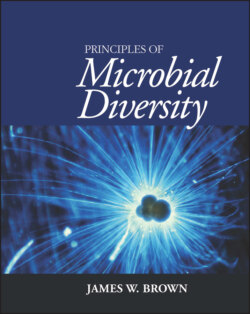Читать книгу Principles of Microbial Diversity - James W. Brown - Страница 77
Treeing algorithms Fitch-Margoliash: an alternative distance-matrix treeing method
ОглавлениеAnother useful method for generating trees from distance matrices is that of Fitch and Margoliash, commonly called Fitch. This algorithm starts with two of the sequences, separated by a line equal to the length of the evolutionary distance between them. For example, for this distance matrix:
| Evolutionary distance | |||||
| A | B | C | D | E | |
| A | — | — | — | — | — |
| B | 0.18 | — | — | — | — |
| C | 0.23 | 0.04 | — | — | — |
| D | 0.29 | 0.35 | 0.29 | — | — |
| E | 0.77 | 0.77 | 0.77 | 0.77 | — |
one might start with sequences A and B (usually in practice, the sequences are chosen randomly):
Then the next sequence is added to the tree such that the distances between A, B, and C are approximately equal to the evolutionary distances:
Note that the fit is not perfect. If we could determine the evolutionary distances exactly, they would fit the tree exactly, but since we have to estimate these distances, the numbers are fit to the tree as closely as possible using averaging or least-squares best fit.
The next step is to add the next sequence, again readjusting the tree to fit the distances as well as possible:
And at last we can add the final sequence and readjust the branch lengths one last time using least-squares:
Neighbor joining and Fitch are both least-squares distance-matrix methods, but a big difference is that neighbor joining separates the determination of the tree structure from solving branch lengths, whereas Fitch solves them together but does so by adding branches (sequences) one at a time.
